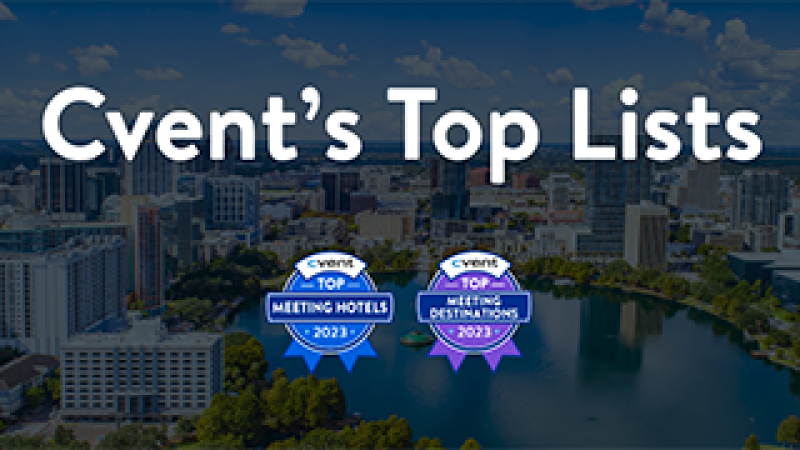In the experience economy, meeting planners want new, creative ways to engage their audiences — a good meeting outcome, after all, is all about the attendee experience. In fact, according to the American Express 2019 forecast, if event budgets were to increase, planners say a top priority would be to improve the onsite experience.
To maintain a competitive edge, venues need to prepare for this demand by developing new programs, redesigning their spaces, and offering access to technology that enhances collaboration and engagement. Here we take a look at the emerging corporate meeting trends.
Discover three ways to prepare for corporate meeting trends
1. Offer unconventional spaces.
As a 2019 meeting trends report by CWT Meetings & Events noted, “Venue selection in 2019 will be about being adventurous, creative, and having the space not to have to sit on a chair all day. Attendee experience is driving that completely, to ensure each delegate has a successful, creative meeting." Corporate meeting planners are competing with shorter attention spans and constant distractions from social media and digital communication. They want to capitalize on how business delegates network, engage, and share conversations.
There is a disconnect, however, between the perceptions of planners and venue operators about priorities for creating more engaging meeting spaces. For example, a survey by IACC found that while 40% of meeting planners feel that networking spaces outside of the meeting room are important, only 29% of venue operators feel the same. The survey did find, however, that 60% of operators believe the flexibility of meeting space will become more important in the next three to five years. To remain competitive, you need to take a strategic look at your space — what creative or flexible setups can you offer beyond traditional seating? Some ideas include:
- "Fireside chat" seating to facilitate a more informal conversation between the moderator and guests.
- Interactive touch-screen tables to streamline onsite registration and event navigation.
- Creative partitions, such as modular yet stylish dividers, to make space reconfiguration easy.
- Multi-learning meeting rooms to cater to different learning styles (such an auditory, visual, and collaborative).
- Flexible and easy-to-move furniture and equipment to enable fast mid-event changes and the creation of collaboration spaces outside the meeting room.
Learn about corporate meeting space technology
2. Invest in technology based on corporate meeting trends.
Technology powers many meeting objectives, as attendees are immersed in a host of technology-driven experiences. Fast-growing technology demands for venues include:
- Virtual and augmented reality, used for everything from networking and gamifying meetings to enhancing the dining environment.
- Branded mobile apps for instant access to meeting agendas and other information.
- RFID (radio frequency identification) tags to collect data.
- Chatbots powered by artificial intelligence to provide delegates with real-time answers.
All these technologies result in increased Wi-Fi demand and data traffic. In addition to making internet infrastructure improvements a top priority, consider offering free internet in your RFP to provide better value to planners. Security enhancements are another differentiator. As data capture and analytics become an integral part of meetings — and data breaches are the new business reality — planners will seek to assure delegates that their personal information is safe and secure.
3. Become a strategic consultant.
As planners look to raise the bar for interactive meetings, even the cocktail hour is becoming more experiential. But with event budgets relatively flat, they are increasingly relying on the venues for advice on how to elevate the attendee experience. Become a more valuable partner by viewing your role as a strategic consultant. That means approaching the corporate meeting more holistically and designing programs that expand beyond your onsite “home base."
The recent “Future of Meetings and Events" report sponsored by Marriott and PCMA identified emotional intelligence — designing with the end user in mind — and sense of place as two of five top trends. Consumers expect brands to treat them as individuals rather than a homogenous segment, and your role as a partner is to help planners deliver personalized and authentic experiences. To help them execute their vision, think outside the traditional programming box. For example:
- Partner with local suppliers that can offer offsite packages such as tours and adventures, as well as host “micro-events."
- Leverage travel destinations and other community resources to provide authentic after-meeting activities that tap into the local culture, such as a tour that lets participants sample local cuisine.
- Offer planners programs that take attendees to quirky, unique, off-the-beaten-path places that are sure to make their event memorable.
Embrace corporate meeting trends to win
Now that you know how to prepare for the trends headed our way, get a few of the best ideas for making meetings more experiential when you download the free eBook "What Makes an Event? 7 Things Every Hospitality Professional Should Know". Up next, learn how to connect with Generation Z planners.





